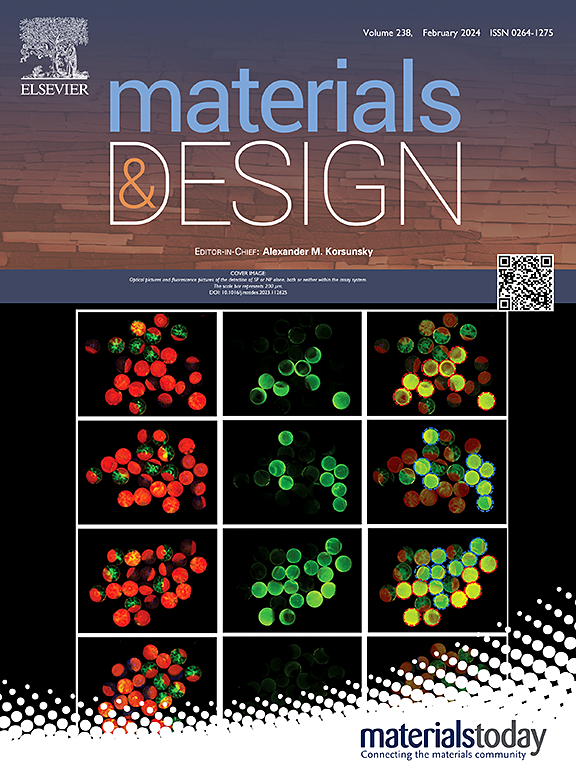采用激光粉末床熔合(PBF-LB)技术的HAYNES®282®高温合金增材制造路线图
IF 8.4
引用次数: 19
摘要
虽然在过去的十年中已经探索了各种合金系统用于增材制造(AM),但引入一种新的合金仍然是一项具有挑战性的任务。大多数材料需要迭代构建,以调查大量参数并确定可行且可重复的过程窗口。在具有挑战性但要求很高的材料中,选择了Haynes 282高温合金。最初通过传统的密度立方体方法进行加工,通过改变每个加工立方体的工艺参数。虽然初始构建的相对密度并不是很低,但所有的微裂纹都存在,大多数是在选择性的晶界上进化而来的,并且只跨越单一的激光路径。采用了详细的建模和先进的表征技术来了解开裂的根本原因和机理。结果表明,晶界析出物是裂纹萌生的主要原因,在晶界上由于邻近晶粒取向而产生应力梯度。因此,确定其破坏机制为延性-倾裂。在此基础上,利用高温和新颖的扫描策略定义了一个新的过程窗口。在改进的加工窗口下,没有观察到裂纹,这意味着该材料可以可靠地进行激光粉末床熔合(PBF-LB)加工。本文章由计算机程序翻译,如有差异,请以英文原文为准。
Roadmap for additive manufacturing of HAYNES® 282® superalloy by laser beam powder bed fusion (PBF-LB) technology
Abstract Although various alloy systems have been explored for additive manufacturing (AM) during the past decade, introducing a new alloy remains a challenging task. Most of the materials require iterative builds, for investigating numerous parameters and determining a viable and repeatable process window. Among the challenging yet highly demanded materials, Haynes 282 superalloy was chosen. It was initially processed through conventional density cube approach, by varying the process parameters for each processed cube. Although the relative densities of the initial builds were not dramatically low, micro-cracks were present in all of them, mostly evolved on a selective number of grain boundaries and spanning only across a single laser path. Detailed modelling and advanced characterization techniques were employed to understand the root cause and cracking mechanism. It was found that the grain boundary precipitates are responsible for crack initiation, amid stress gradient across the grain boundary due to the adjacent grain orientations. Therefore, the failure mechanism is determined as ductility-dip cracking. Based on the findings, a new process window was defined using elevated temperature and novel scanning strategy. No cracks were observed under the modified processing window, meaning that the material can reliably be processed by laser beam powder bed fusion (PBF-LB).
求助全文
通过发布文献求助,成功后即可免费获取论文全文。
去求助
来源期刊
自引率
0.00%
发文量
0
期刊介绍:
Materials and Design is a multidisciplinary journal that publishes original research reports, review articles, and express communications. It covers a wide range of topics including the structure and properties of inorganic and organic materials, advancements in synthesis, processing, characterization, and testing, as well as the design of materials and engineering systems, and their applications in technology.
The journal aims to integrate various disciplines such as materials science, engineering, physics, and chemistry. By exploring themes from materials to design, it seeks to uncover connections between natural and artificial materials, and between experimental findings and theoretical models. Manuscripts submitted to Materials and Design are expected to offer elements of discovery and surprise, contributing to new insights into the architecture and function of matter.

 求助内容:
求助内容: 应助结果提醒方式:
应助结果提醒方式:


